Modern kitchens have evolved beyond simple cooking spaces into dynamic hubs that reflect personal style, advanced functionality, and innovative design approaches. The latest kitchen design ideas for 2025 embrace bold colors, sustainable materials, smart technology, and personalized touches that create spaces truly tailored to how families live and entertain. These designs move away from cookie-cutter approaches toward kitchens that feel authentic, characterful, and uniquely yours. Whether you're planning a complete renovation or seeking inspiration for smaller updates, these twenty comprehensive kitchen design ideas showcase the most compelling trends transforming today's culinary spaces into extraordinary environments.
1. Mid-Century Modern Kitchen Design
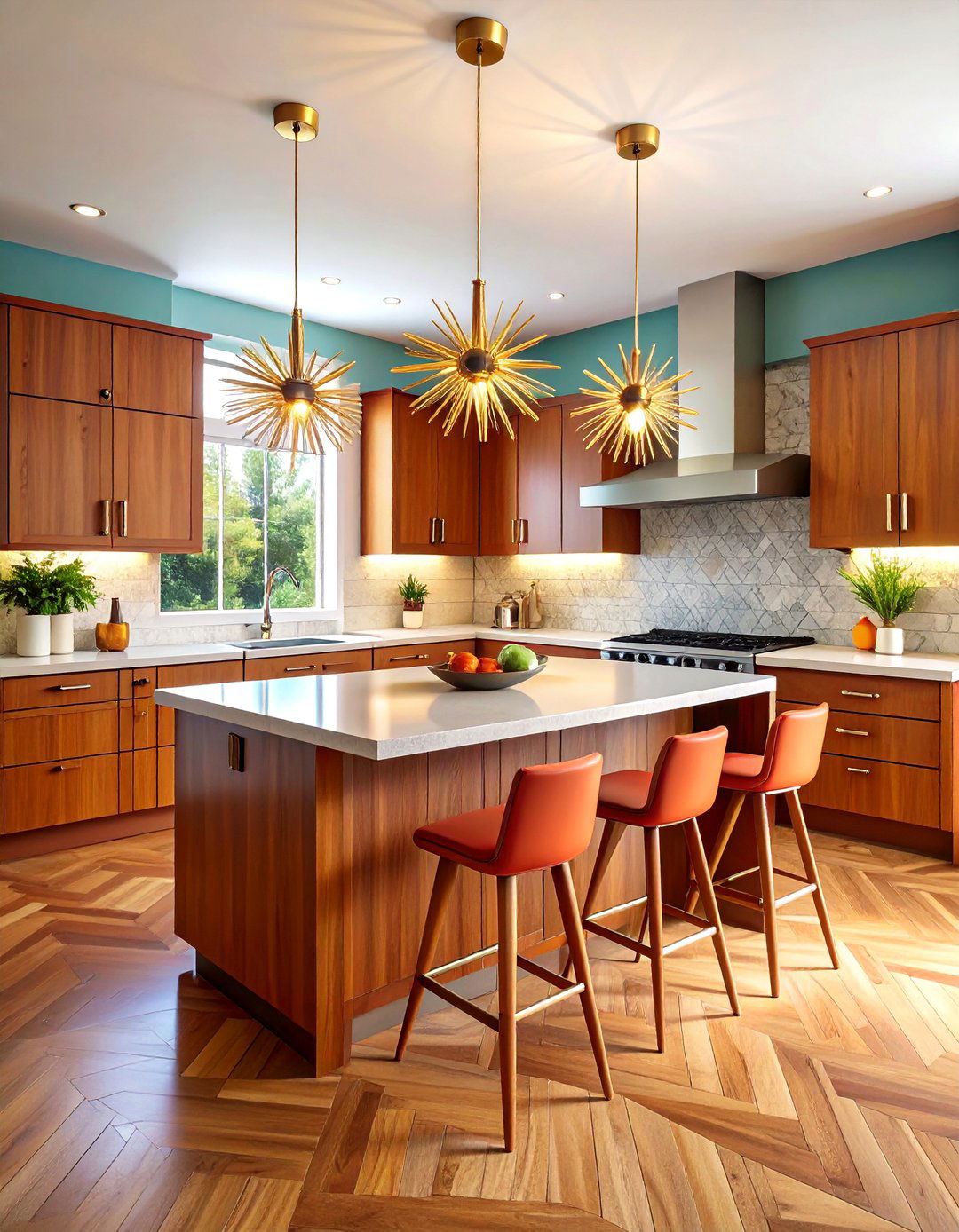
Celebrating the timeless appeal of 1950s and 1960s aesthetics, this kitchen design style features clean geometric lines, warm natural wood tones like walnut and teak, and bold accent colors. The design emphasizes functionality through streamlined cabinetry with minimal hardware, while incorporating vintage-inspired elements like starburst light fixtures, geometric backsplash tiles, and retro bar stools. Natural wood finishes are paired with sleek surfaces and brass or copper accents to create warmth. Open shelving displays carefully curated dishware, while the color palette combines neutral bases with pops of mustard yellow, burnt orange, or deep teal. This approach creates kitchens that feel both nostalgic and refreshingly modern.
2. Sustainable Eco-Friendly Kitchen Design

Environmentally conscious materials and energy-efficient systems define this forward-thinking kitchen design approach. Reclaimed wood cabinetry, recycled glass countertops, and bamboo flooring create stunning visual appeal while reducing environmental impact. Cork flooring provides comfort underfoot alongside sustainability benefits, while energy-efficient appliances with smart features minimize power consumption. The design incorporates second-life furniture pieces and vintage elements to reduce waste. Stone finishes from local quarries and low-VOC paints contribute to healthier indoor air quality. LED lighting systems and smart home integration optimize energy usage. Storage solutions maximize functionality while supporting zero-waste cooking practices. This design proves that environmental responsibility and sophisticated style work beautifully together in creating kitchens for the future.
3. Smart Technology Kitchen Design
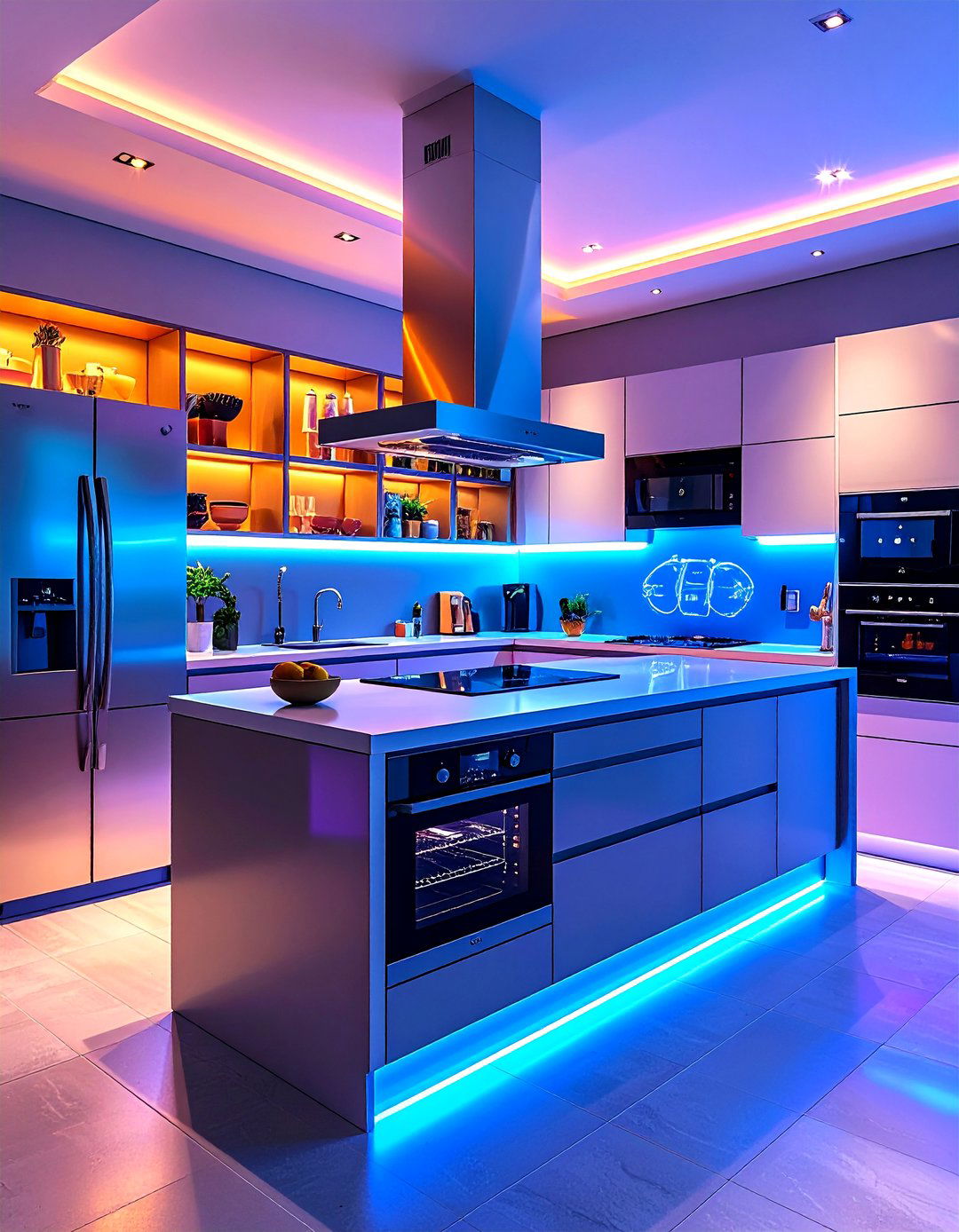
Revolutionary smart features transform traditional cooking spaces into connected, efficient environments that adapt to modern lifestyles. Voice-controlled assistants manage lighting, temperature, and music, while smart refrigerators track inventory and suggest recipes based on available ingredients. Wi-Fi-enabled ovens allow remote monitoring and control, and induction cooktops offer precise temperature management. Smart faucets respond to voice commands and monitor water usage, while integrated charging stations keep devices powered. The design seamlessly incorporates technology without creating visual clutter, using hidden outlets and cable management systems. Touch-activated cabinetry eliminates traditional hardware needs. App-controlled lighting creates perfect ambiance for cooking or entertaining. These kitchens anticipate user needs, making daily tasks more efficient and enjoyable while maintaining elegant aesthetics.
4. Green Color-Themed Kitchen Design

Embracing nature's most versatile hue, this kitchen design celebrates green in all its magnificent variations from soft sage to dramatic emerald. Cabinetry in forest green or olive tones creates sophisticated foundations, while lighter mint or seafoam accents provide balance. Natural materials like marble and wood complement the organic color palette beautifully. Brass hardware adds warmth against deeper green tones, while copper fixtures create stunning contrast. The backsplash might feature green zellige tiles with handcrafted variations, or green-veined marble for seamless elegance. Plants and herbs thrive in this environment, reinforcing the connection to nature. Window treatments and textiles in complementary greens complete the cohesive look. This design creates kitchens that feel fresh, calming, and effortlessly sophisticated while remaining timeless enough to love for decades.
5. Curved & Rounded Kitchen Design

Soft, organic shapes replace sharp angles in this flowing kitchen design approach that emphasizes comfort and visual harmony. Rounded countertop edges, curved cabinet corners, and circular islands create gentle movement throughout the space. The design philosophy extends beyond individual elements to encompass entire layouts that feel more natural and welcoming. Cabinet doors feature subtle curves, while furniture-style legs on islands add softness compared to rigid built-in designs. Arched doorways and rounded backsplash transitions eliminate harsh lines. Even lighting fixtures embrace circular or flowing forms. The approach works equally well in modern and traditional settings, proving its versatility. Storage solutions maintain functionality while incorporating curved elements. This design creates kitchens that feel more relaxed and organic, perfect for families seeking comfort and sophistication in their daily gathering spaces.
6. Butler's Pantry Kitchen Design

Also known as scullery or back kitchens, these secondary spaces revolutionize kitchen functionality by separating messy preparation work from the main entertaining area. Located adjacent to primary kitchens, these "dirty kitchens" include sinks, dishwashers, small appliances, and abundant storage for dishes and serving pieces. The main kitchen remains pristine for hosting while the butler's pantry handles food prep, cleaning, and storage of everyday clutter. Design elements often feature darker, more practical finishes that hide wear and stains. Cabinetry extends to the ceiling for maximum storage, while countertops accommodate multiple small appliances. Even modest spaces benefit from butler's pantry principles through strategically designed pantry alcoves with cabinetry, countertops, and specialized storage. This design approach transforms how families cook and entertain, creating more organized and functional kitchens.
7. Industrial Modern Kitchen Design
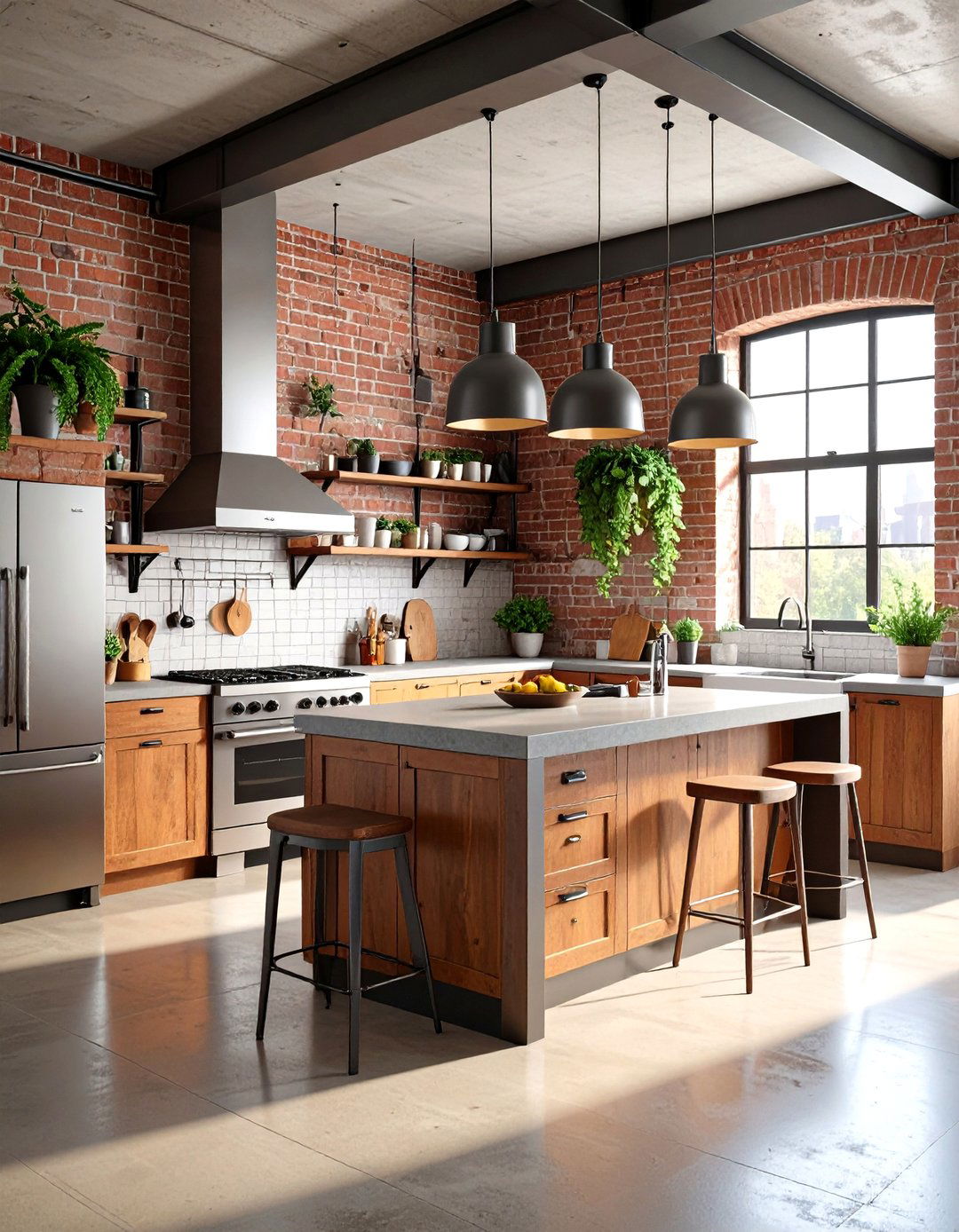
Drawing inspiration from urban lofts and converted warehouses, this kitchen design combines raw materials with sophisticated finishes to create spaces that feel both edgy and refined. Exposed brick walls, concrete countertops, and stainless steel appliances provide authentic industrial elements, while warm wood accents and carefully chosen lighting soften the aesthetic. Open shelving displays dishes and glassware, while pendant lights with metal shades illuminate work areas. Cabinet hardware features substantial pulls in black iron or brushed steel. The color palette centers on grays, blacks, and whites with natural wood tones providing warmth. Subway tiles or metal backsplashes reinforce the urban aesthetic. Despite its utilitarian roots, this design approach emphasizes comfort and livability, creating kitchens that feel both sophisticated and welcoming for everyday family life.
8. Bold Jewel-Tone Kitchen Design

Rich, saturated colors create dramatic focal points in this confident kitchen design approach that celebrates personality and sophistication. Deep burgundy cabinets pair beautifully with brass hardware and natural stone countertops, while emerald green islands become stunning centerpieces. Mustard yellow cabinetry brings optimism and warmth, especially when balanced with neutral walls and natural materials. The key lies in choosing one primary jewel tone and building the entire palette around it, using complementary neutrals and metals to create balance. Lighting becomes crucial in showcasing these rich colors properly, while natural materials prevent the space from feeling overwhelming. Cabinet finishes might include matte or satin sheens that enhance color depth. This design creates kitchens with remarkable personality that feel both luxurious and welcoming.
9. Rustic Minimalist Kitchen Design

Combining the warmth of natural materials with clean, uncluttered aesthetics, this kitchen design celebrates authentic textures while maintaining modern functionality. Large, solid wood elements like thick countertops or ceiling beams create focal points, while the overall design remains stripped to essentials. Cabinet doors feature simple profiles in natural wood finishes, and hardware is minimal or absent entirely. Stone backsplashes and concrete countertops add raw texture without unnecessary ornamentation. The color palette emphasizes natural tones—warm grays, creams, and wood stains that highlight grain patterns. Storage solutions hide behind seamless cabinet fronts, maintaining clean lines. Lighting fixtures are simple and functional, often featuring black metal or natural materials. This approach creates kitchens that feel both sophisticated and grounded, perfect for those seeking authenticity without sacrificing modern conveniences.
10. Outdoor-Indoor Kitchen Design
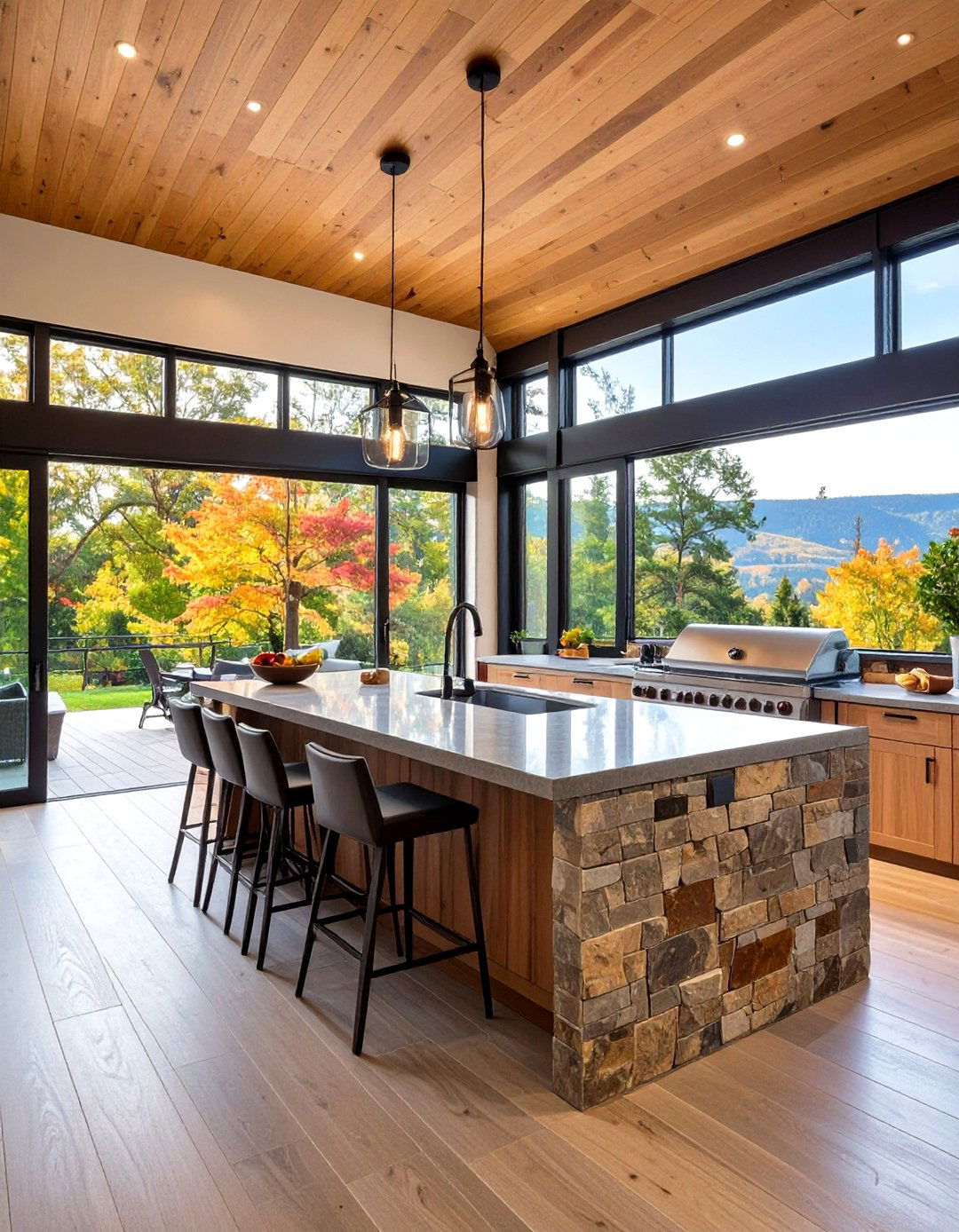
Seamlessly blending interior and exterior spaces, this kitchen design creates flow between indoor cooking areas and outdoor entertaining zones through large openings, consistent materials, and shared design elements. Folding glass doors or oversized windows eliminate barriers between spaces, while durable materials like natural stone extend from interior countertops to outdoor surfaces. Weather-resistant cabinetry and appliances expand cooking capabilities beyond traditional boundaries. The design often features covered outdoor areas with full kitchen facilities including grills, refrigeration, and prep space. Color palettes draw from natural surroundings, while furniture and fixtures withstand outdoor conditions. Lighting systems illuminate both spaces cohesively for evening entertaining. This approach transforms how families cook and gather, creating year-round entertaining capabilities while maximizing connection to nature. The result feels like living in a luxury resort where cooking and outdoor living merge seamlessly.
11. Banquette Seating Kitchen Design
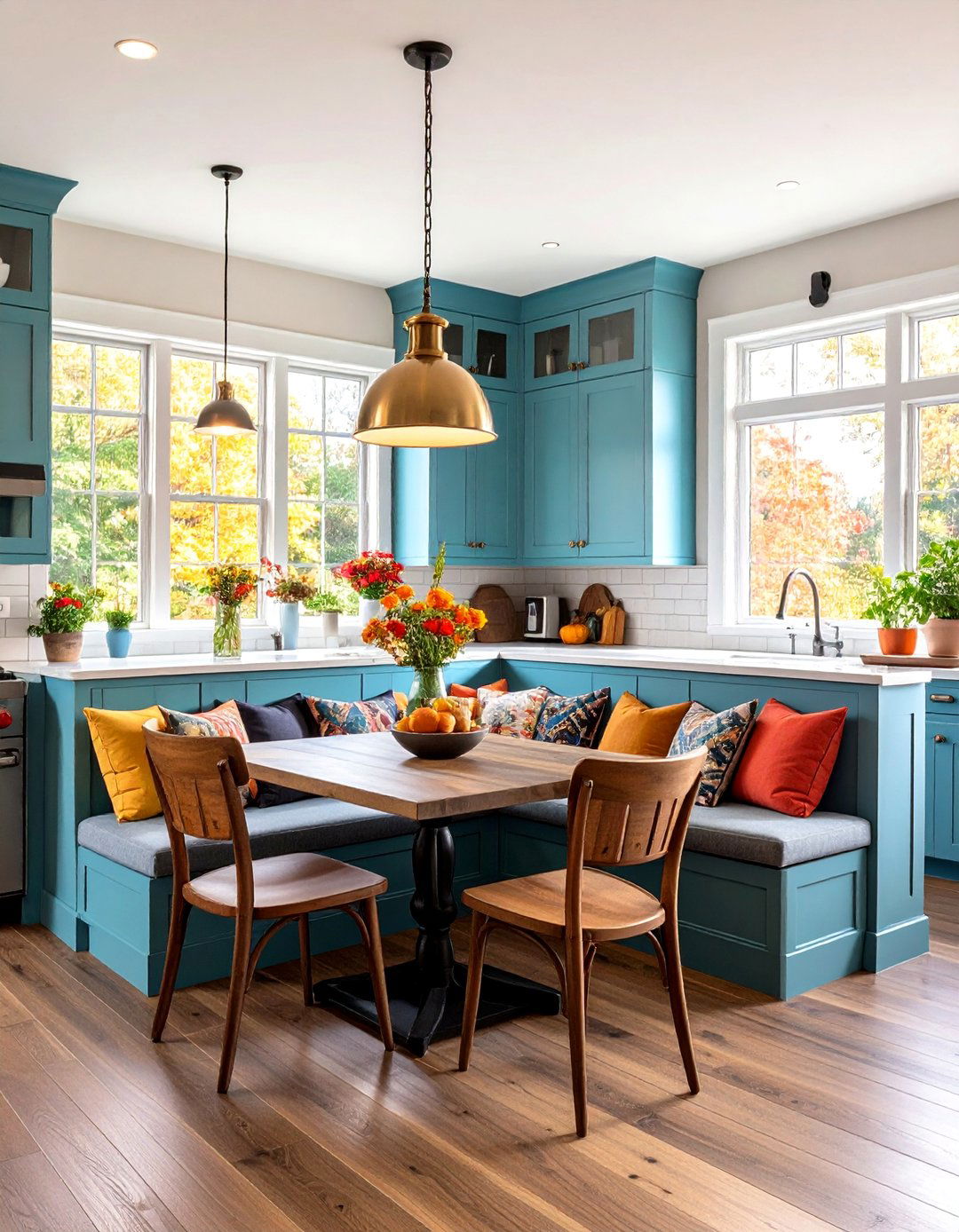
Built-in seating solutions transform kitchen corners and awkward spaces into cozy gathering spots that maximize both comfort and functionality. These restaurant-inspired elements create intimate dining areas within the kitchen footprint, perfect for casual family meals and morning coffee routines. L-shaped banquettes fit naturally into corners, while window seats take advantage of natural light and views. Custom cushions in durable fabrics provide comfort and style, often incorporating hidden storage beneath seating areas. Tables are sized proportionally to the seating, sometimes featuring pedestal bases for easier access. The design works particularly well in smaller kitchens where traditional dining furniture might feel overwhelming. Color schemes often coordinate with kitchen cabinetry while adding softer textile elements through cushions and pillows. This approach creates kitchens that feel more residential and welcoming while providing practical everyday dining solutions.
12. Mixed Materials Kitchen Design
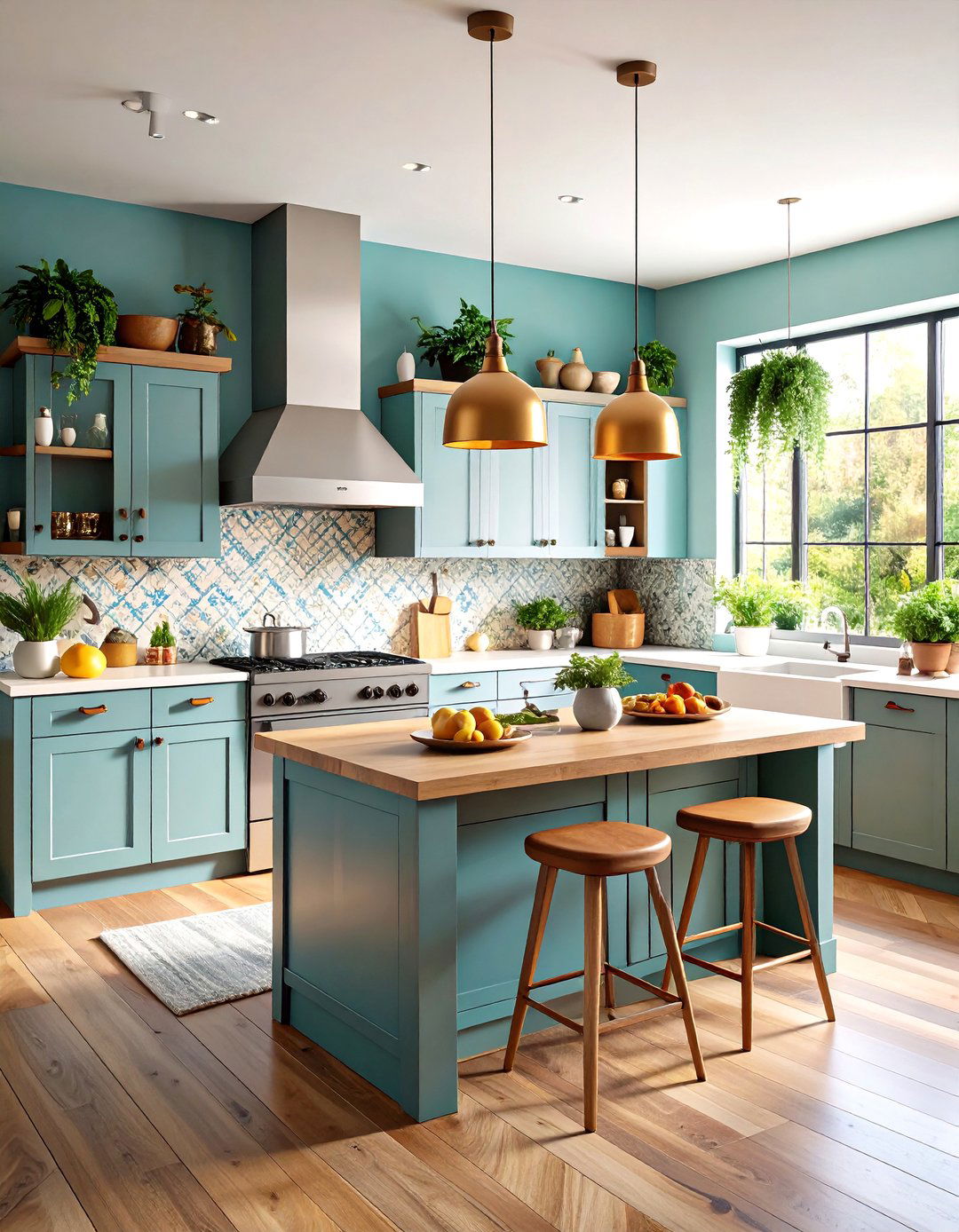
Celebrating contrast and texture, this kitchen design combines different materials, finishes, and colors to create sophisticated visual interest and prevent spaces from feeling flat or predictable. Two-toned cabinetry might pair painted lower cabinets with natural wood uppers, while different countertop materials define distinct work zones. Metal accents in varying finishes—brass, chrome, and black iron—add depth without perfect matching. Backsplashes might combine subway tiles with natural stone, or feature mixed tile patterns and textures. Wood species can vary between cabinetry and islands, creating deliberate contrast. The key lies in maintaining balance and intentionality rather than simply mixing for variety's sake. Color palettes provide underlying cohesion while materials and textures create richness. This approach produces kitchens with remarkable personality that feel collected over time rather than designed all at once.
13. Reeded & Fluted Texture Kitchen Design
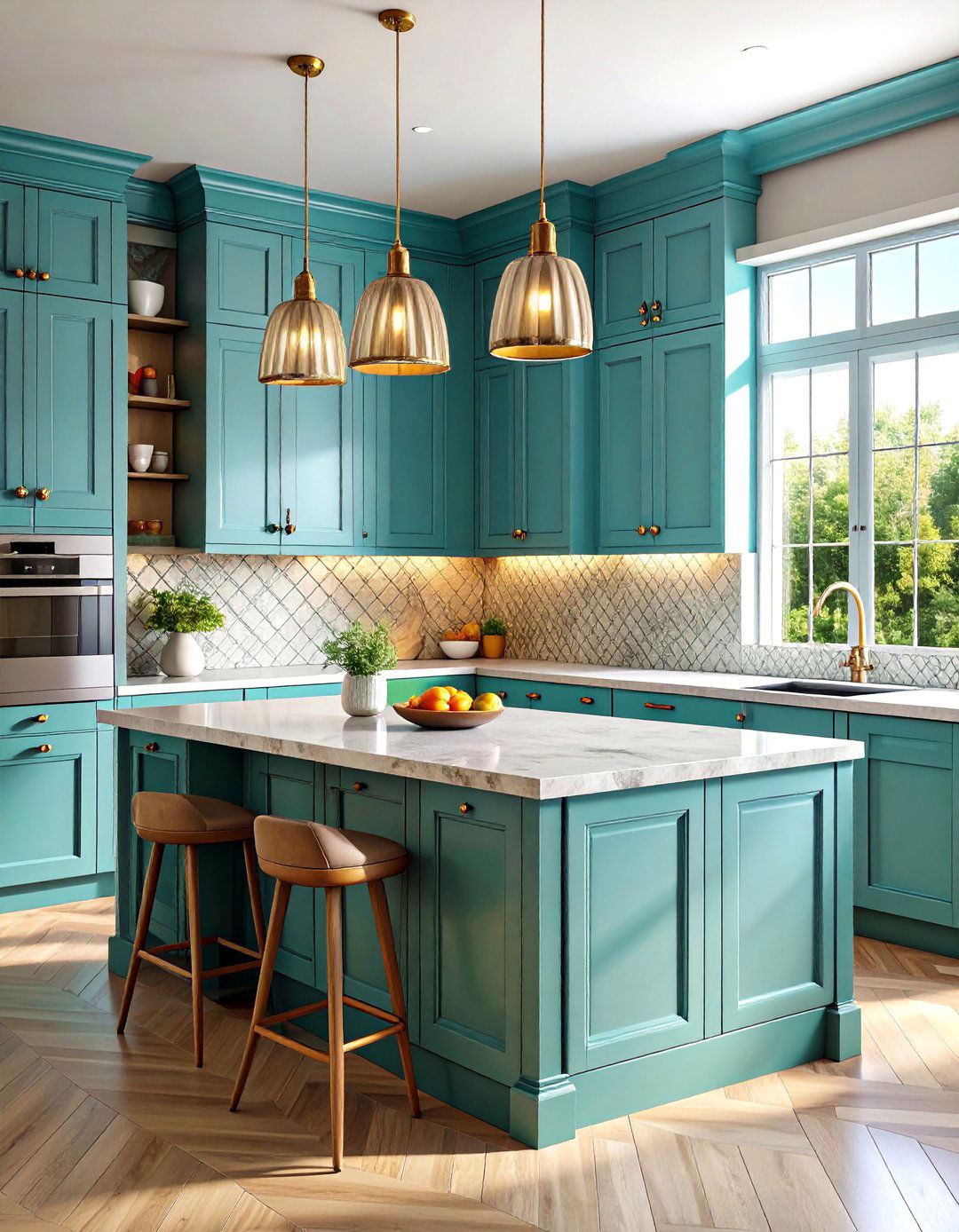
Vertical grooved details add sophisticated texture and visual interest throughout these kitchen designs, from cabinet fronts to backsplash applications and architectural elements. Reeded cabinet doors create subtle shadow lines that add depth without overwhelming spaces, while fluted backsplash tiles provide organic texture that catches light beautifully. The technique works equally well in modern and traditional settings, proving its versatility across design styles. Islands often feature reeded panels that contrast with smooth cabinet fronts elsewhere in the kitchen. Even small applications, like reeded glass cabinet inserts or textured hardware, contribute to the overall aesthetic. The vertical orientation elongates spaces and creates visual movement. Wood, metal, and tile applications all embrace this trending texture. Lighting plays a crucial role in highlighting the subtle shadows and depth these textures create. This design approach adds sophistication and tactile appeal while maintaining clean, contemporary functionality.
14. Work Table Island Kitchen Design
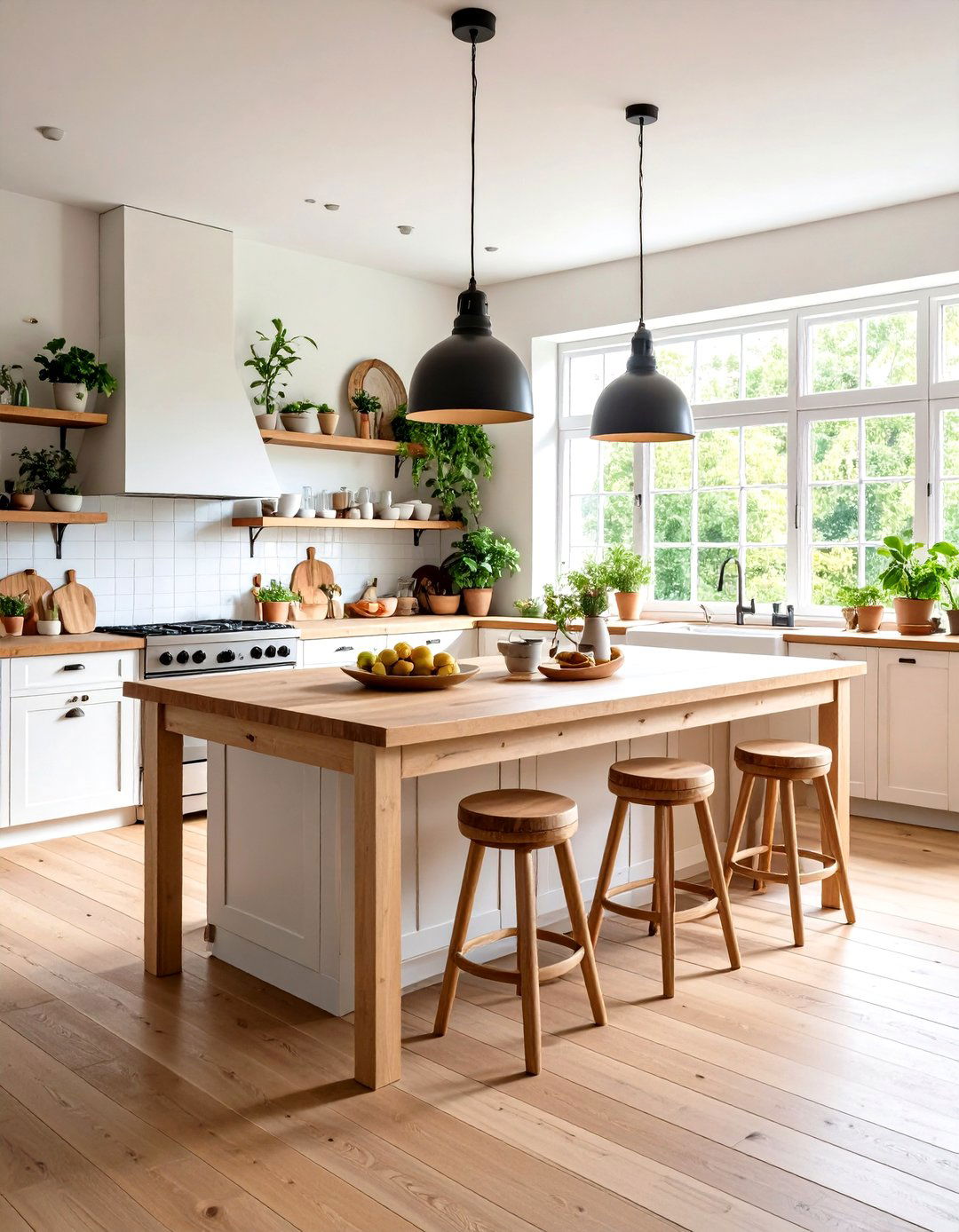
Moving away from heavy built-in islands, this kitchen design embraces furniture-style pieces that feel lighter and more flexible while maintaining full functionality. These islands feature table-like proportions with elegant legs and aprons that create visual breathing room underneath. The design often combines solid wood tops with painted or stained bases, creating beautiful contrast. Storage comes through drawers and lower shelves rather than solid cabinet banks, maintaining the furniture aesthetic while providing practicality. Combination designs might feature 60% closed storage with 40% open space below for counter-height seating. This approach works particularly well in kitchens where traditional islands might feel too imposing or formal. The style references English country kitchens and European farmhouse designs while feeling fresh and contemporary. These islands become beautiful focal points that enhance rather than dominate kitchen layouts.
15. Countersplash Kitchen Design
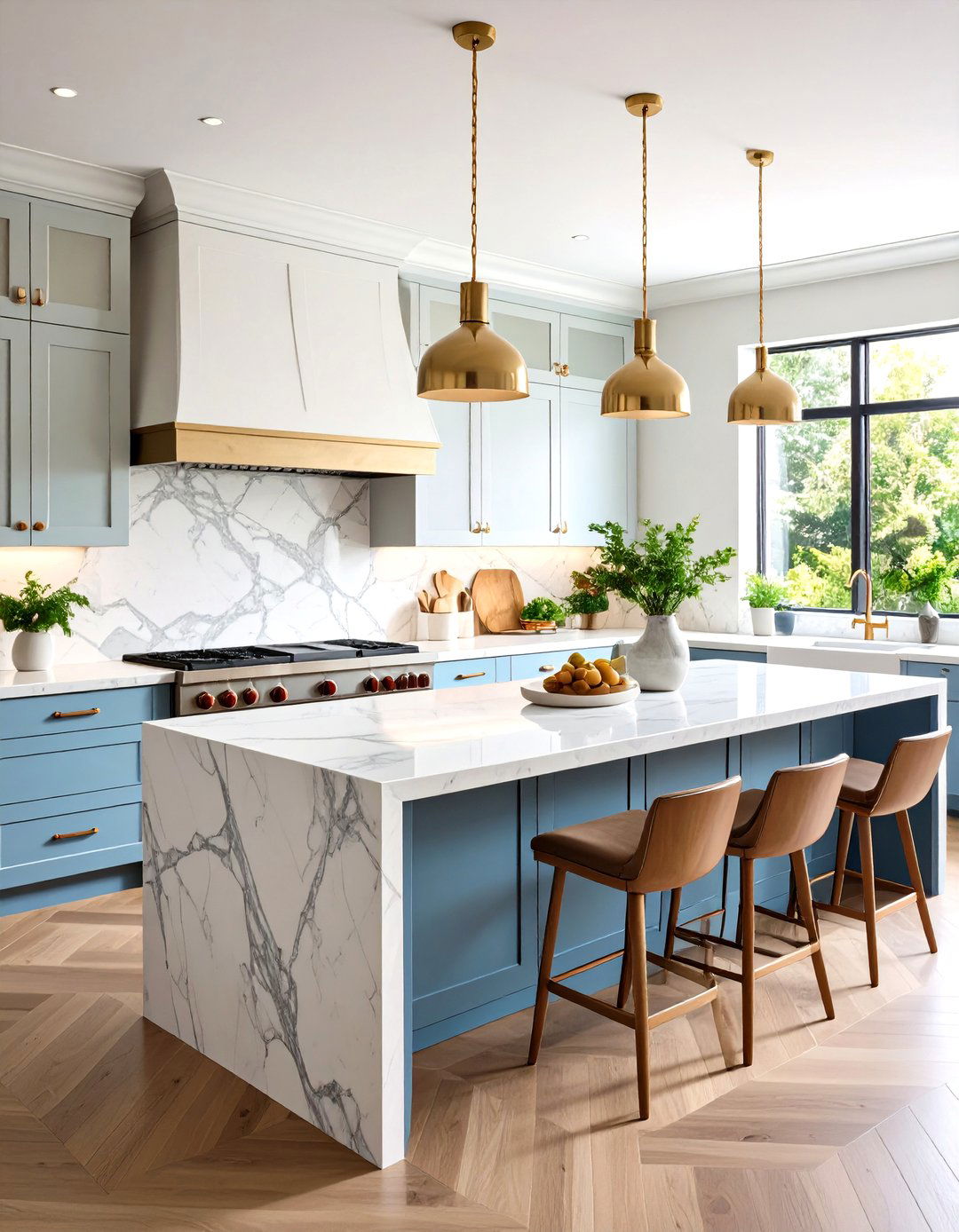
Extending countertop materials up the wall to serve as backsplashes creates seamless, sophisticated looks that emphasize natural stone beauty while reducing visual breaks in kitchen designs. Marble, quartzite, and granite surfaces flow from horizontal to vertical planes, showcasing book-matched stone patterns and creating stunning focal points. This approach eliminates grout lines and maintenance issues associated with tile backsplashes while creating timeless elegance. The technique works particularly well behind cooktops and sinks where easy cleaning is essential. Installation requires skilled fabrication to ensure proper support and seamless joints. While initially more expensive than tile alternatives, the investment pays dividends in longevity and easy maintenance. Design variations might feature different edge treatments or incorporate subtle ledges for practical functionality. This approach creates kitchens that feel luxurious and cohesive while standing the test of time both functionally and aesthetically.
16. Personalized Custom Kitchen Design

Moving beyond standardized layouts and finishes, this kitchen design approach celebrates individual preferences, cooking styles, and aesthetic sensibilities through bespoke elements and thoughtful customization. Custom cabinetry addresses specific storage needs while reflecting personal style preferences through unique hardware, special finishes, and individualized proportions. Built-in features might include specialized storage for collections, hobby equipment, or specific appliances. Color choices reflect personal preferences rather than trending palettes, while architectural details add character unique to each home. The design process involves deep consideration of how families actually use their kitchens, resulting in solutions perfectly tailored to specific lifestyles. Artwork, family heirlooms, and personal collections become integral design elements. This approach creates kitchens that feel authentic and deeply personal while maintaining sophisticated design principles and lasting appeal.
17. Large Format Tile Kitchen Design
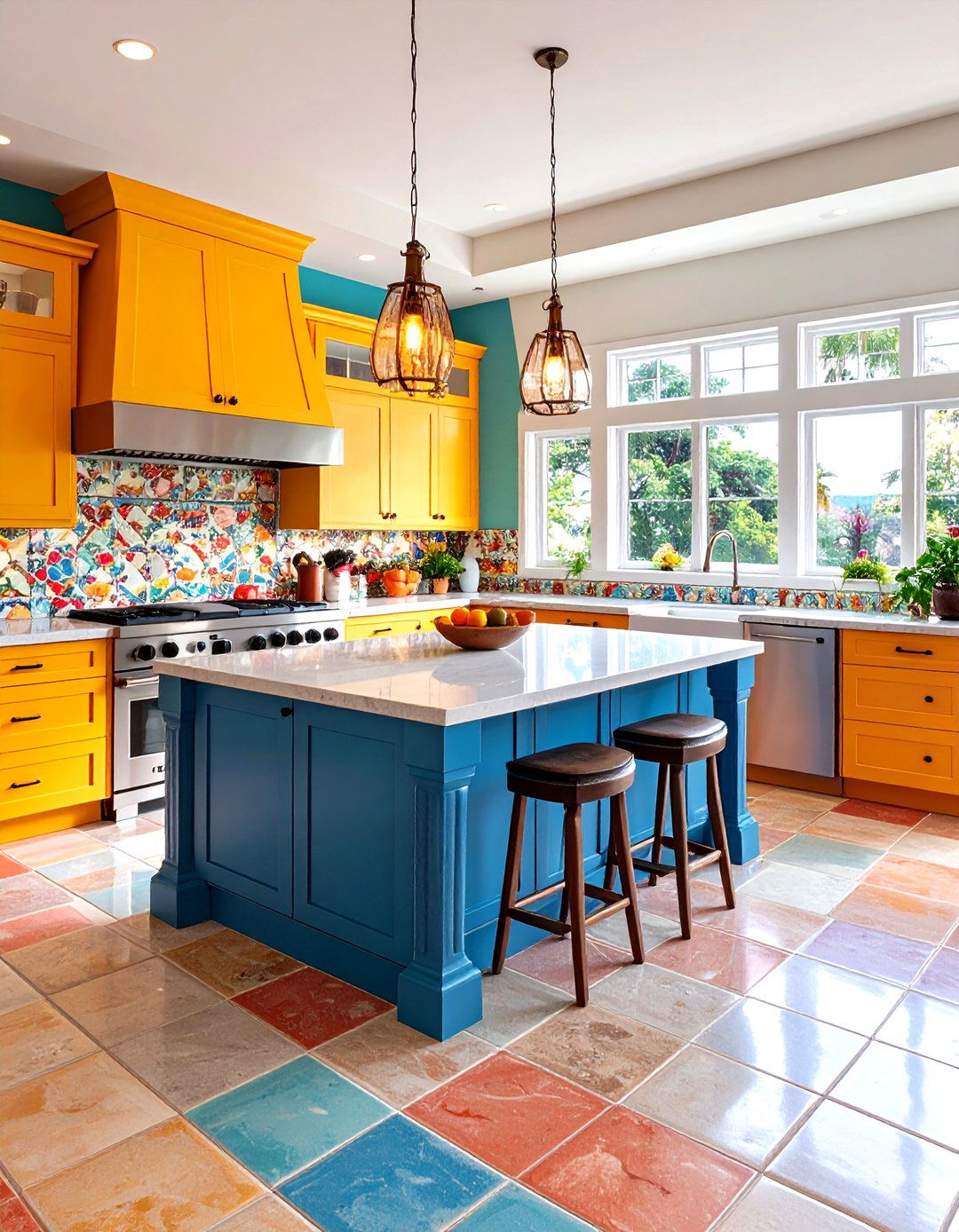
Oversized tiles create seamless, sophisticated surfaces throughout these kitchen designs, making spaces appear larger while reducing maintenance through fewer grout lines. Floor tiles measuring 24 inches or larger create flowing surfaces that enhance open floor plans, while large format backsplash tiles provide clean, contemporary backgrounds for cabinetry and fixtures. The scale works particularly well in modern and transitional design styles where clean lines are emphasized. Installation requires skilled professionals to ensure proper support and level surfaces. Color and pattern options range from solid neutrals to dramatic marble-look porcelain that provides natural stone beauty without maintenance concerns. Edge treatments and transitions become crucial design considerations with larger formats. Lighting design must accommodate the larger scale to prevent shadows and highlight surface beauty. This approach creates kitchens that feel polished and contemporary while offering practical benefits for busy families.
18. Romantic English Kitchen Design
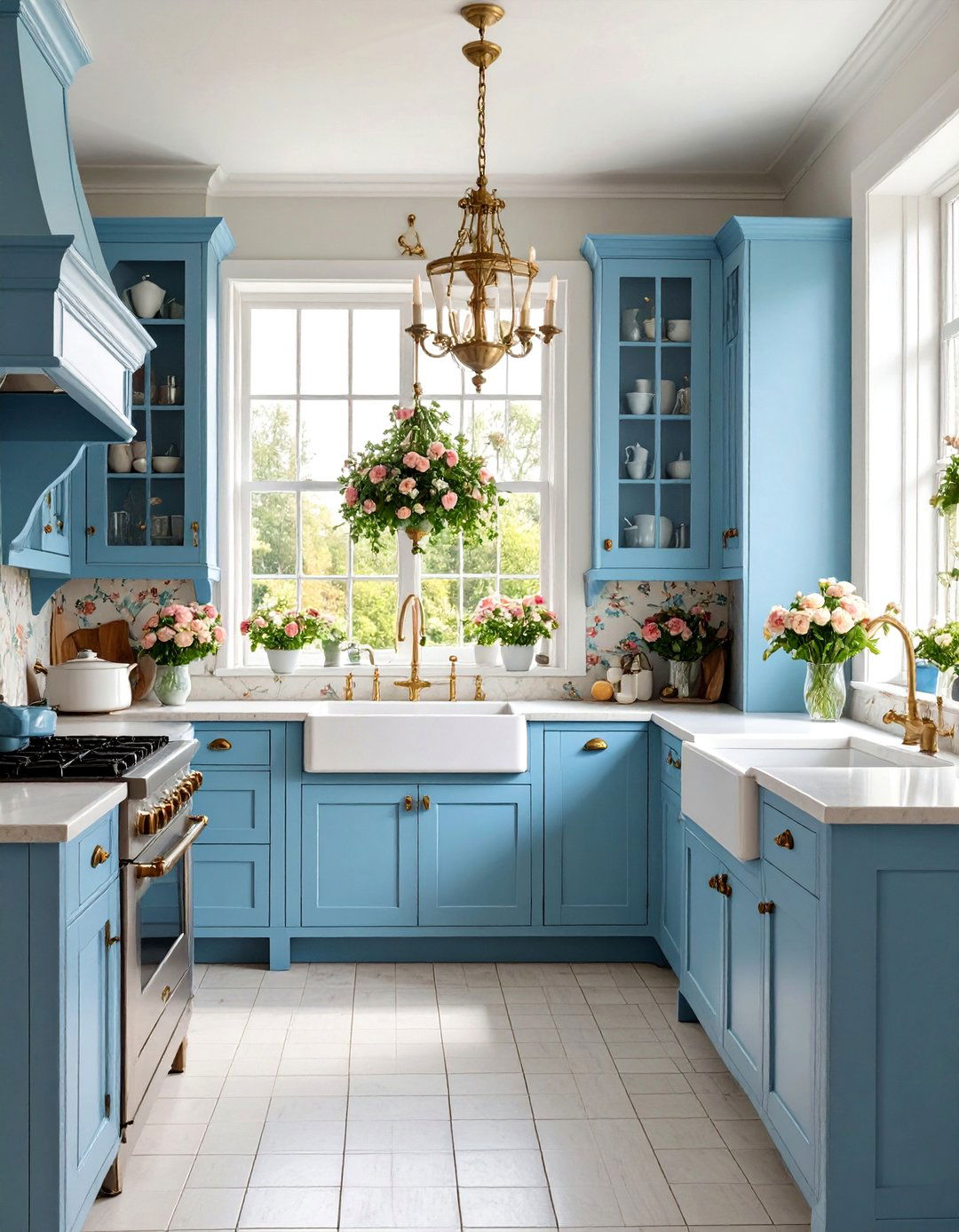
Drawing inspiration from traditional English country houses, this kitchen design embraces ornate details, soft colors, and romantic elements that create warm, welcoming spaces perfect for leisurely cooking and entertaining. Floral wallpapers, delicate tile patterns, and painted cabinetry in soft blues or sage greens establish the foundation. Cabinet hardware features decorative pulls and knobs with vintage-inspired details, while open shelving displays beautiful dishware and serving pieces. The design often incorporates furniture-style elements like hutches, plate racks, and freestanding pieces that feel collected over time. Window treatments in flowing fabrics frame garden views, while pendant lights feature fabric shades or intricate metalwork. Natural materials like marble and wood add authenticity, while careful attention to proportions prevents the style from feeling overly precious. This approach creates kitchens that feel like they've evolved gracefully over decades.
19. Stainless Steel Accent Kitchen Design
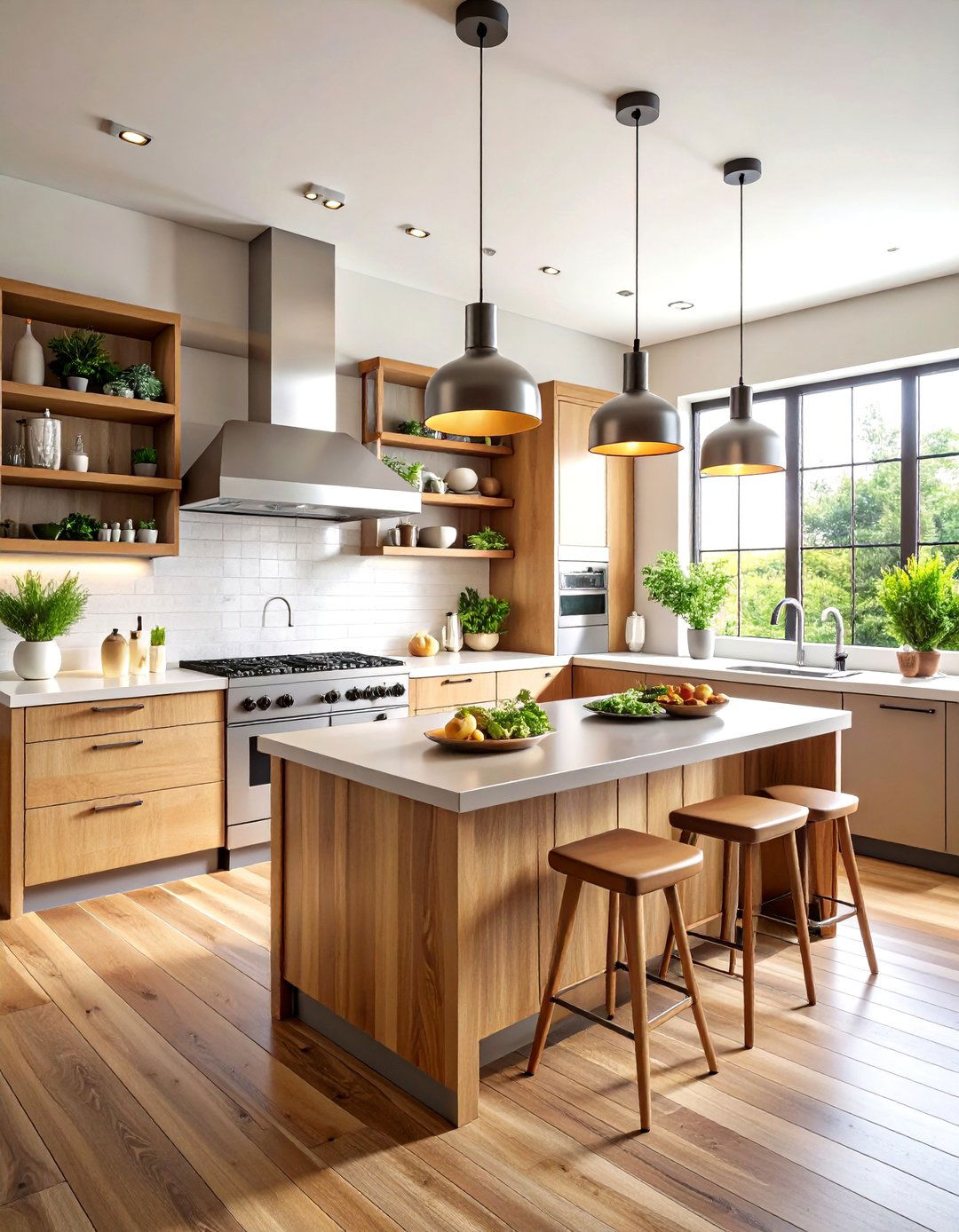
Professional-grade materials meet residential comfort in this kitchen design that celebrates the beauty and functionality of stainless steel while maintaining warmth through thoughtful material pairings. Stainless steel countertops, backsplashes, and appliances create cohesive, restaurant-inspired aesthetics that excel in durability and easy maintenance. The key lies in balancing cool metal surfaces with warm wood cabinetry, natural stone elements, or rich paint colors that prevent spaces from feeling cold or institutional. Cabinet hardware, lighting fixtures, and even decorative elements embrace mixed metal finishes to create depth and interest. The design emphasizes functionality through professional-quality appliances and work surfaces while incorporating residential comfort through seating areas and decorative elements. This approach creates kitchens that feel both sophisticated and practical, perfect for serious cooks who appreciate professional-grade functionality without sacrificing style.
20. Black Accent Modern Kitchen Design
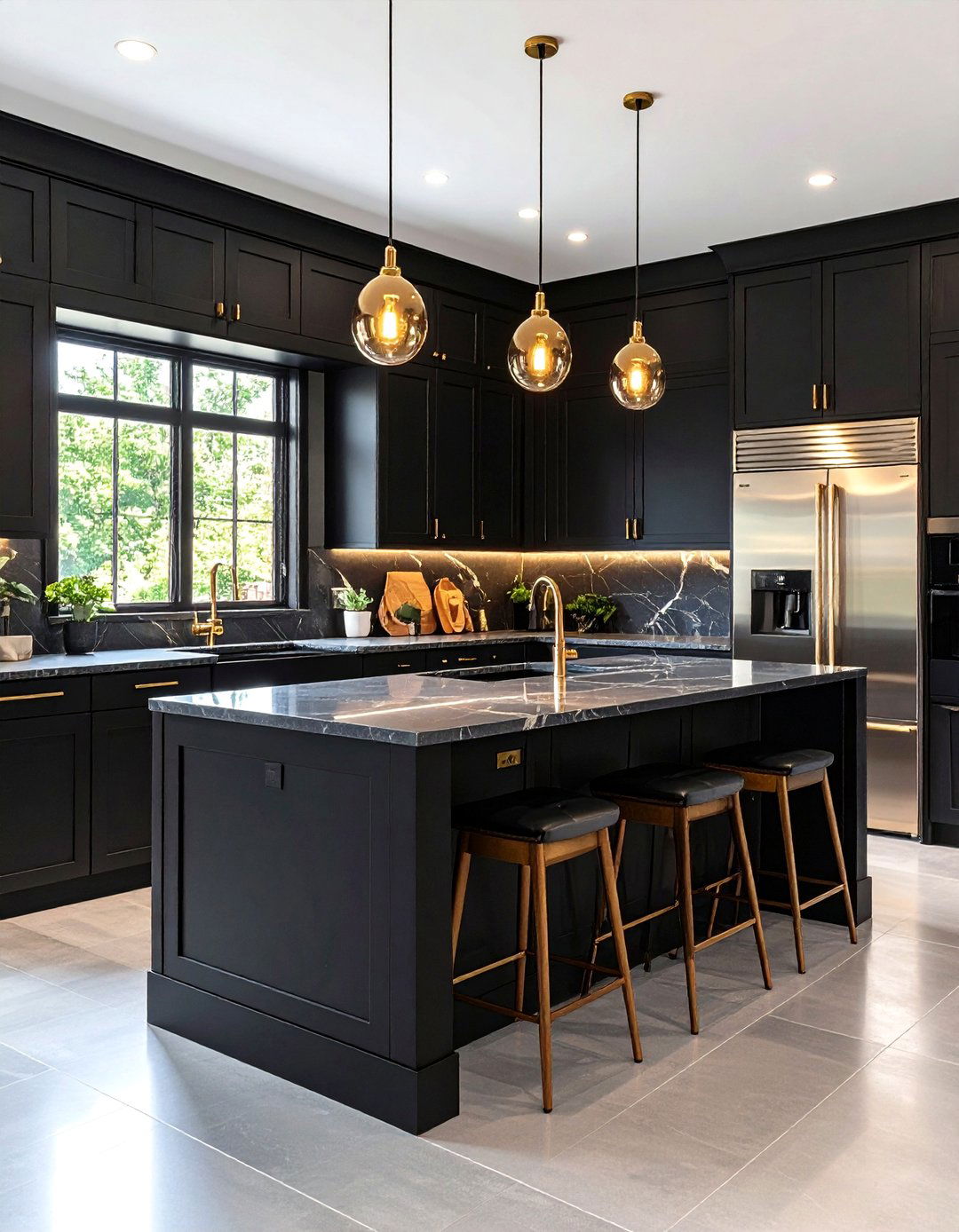
Sophisticated black elements create striking contrast and visual drama in this kitchen design approach that proves dark colors can feel both elegant and welcoming. Black cabinetry, whether matte or glossy, provides stunning foundations for natural stone countertops and brass or stainless steel accents. The design might feature black islands that anchor spaces while maintaining lighter perimeter cabinetry, or embrace full black cabinet schemes balanced by white walls and abundant natural light. Hardware, light fixtures, and even appliances in black finishes create cohesive looks that feel intentional and polished. The key lies in incorporating enough contrast through lighter elements and ensuring adequate lighting to prevent spaces from feeling dark or cramped. This approach creates kitchens with remarkable sophistication and personality that feel both contemporary and timeless.
Conclusion:
These twenty kitchen design ideas demonstrate the exciting evolution of culinary spaces toward more personalized, functional, and aesthetically rich environments. From sustainable materials and smart technology to bold colors and romantic details, 2025's kitchen trends celebrate individuality while embracing practical innovation. Whether you're drawn to the clean lines of mid-century modern design or the warmth of rustic minimalism, each approach offers unique benefits for creating kitchens that truly reflect how you live, cook, and entertain.


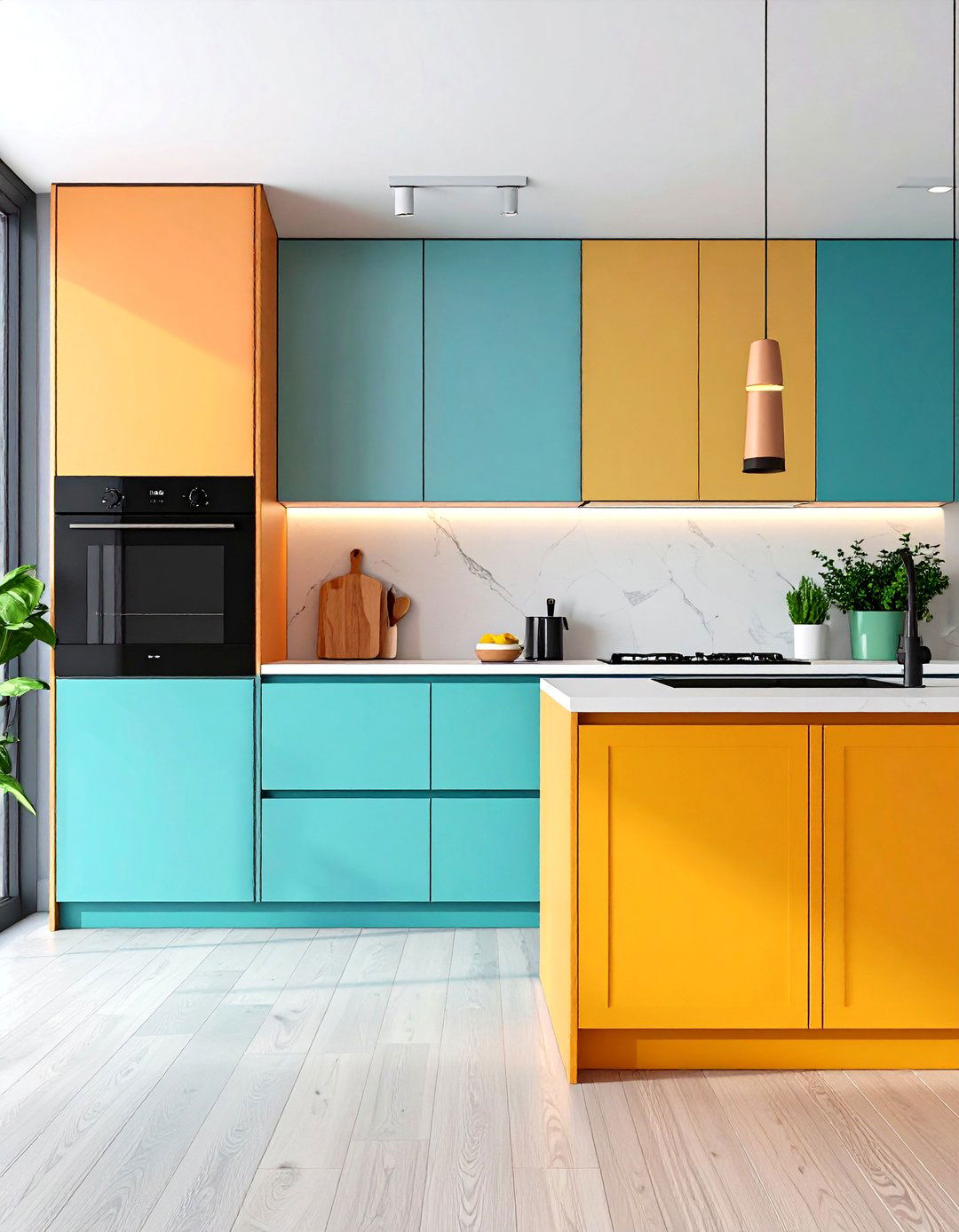
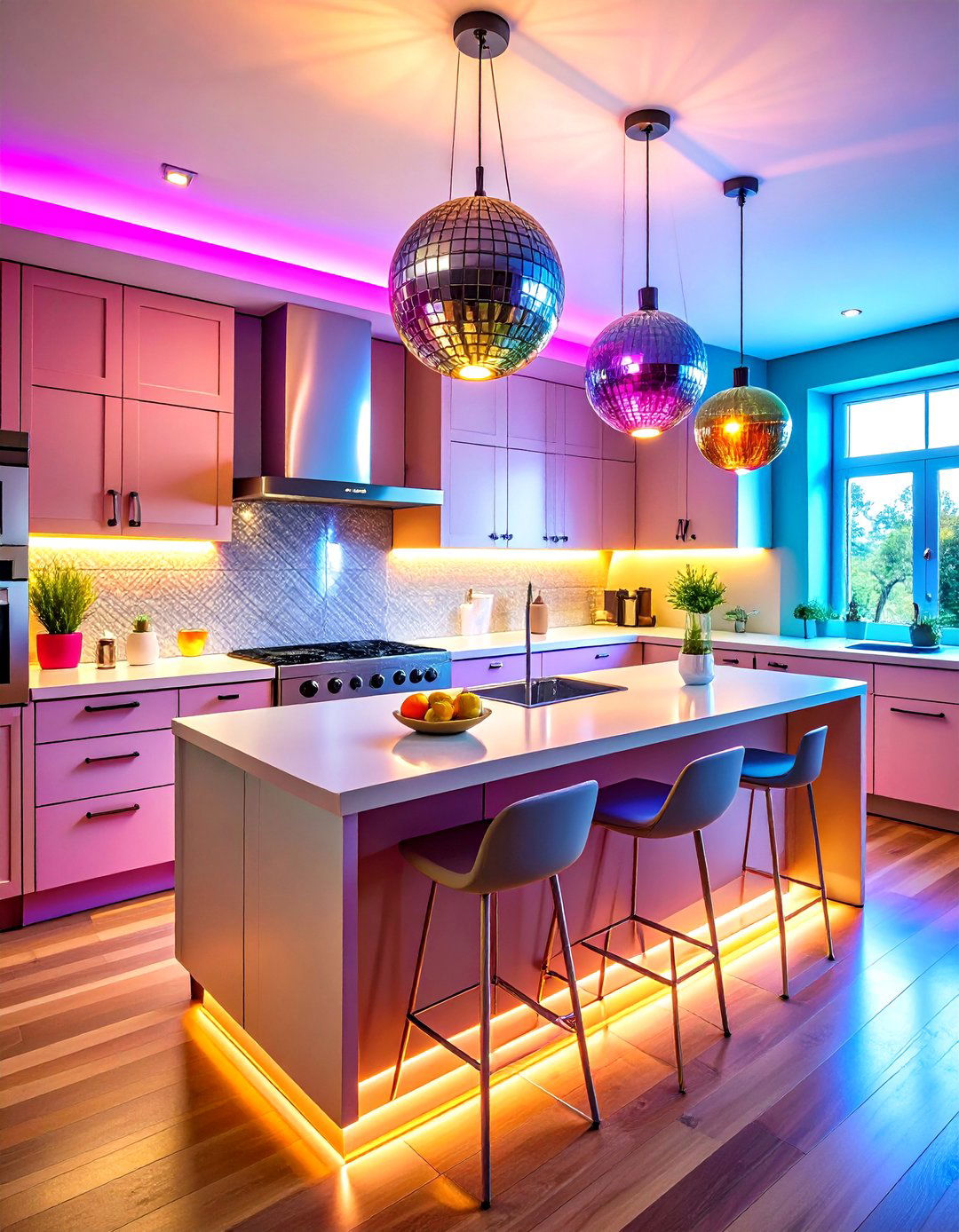
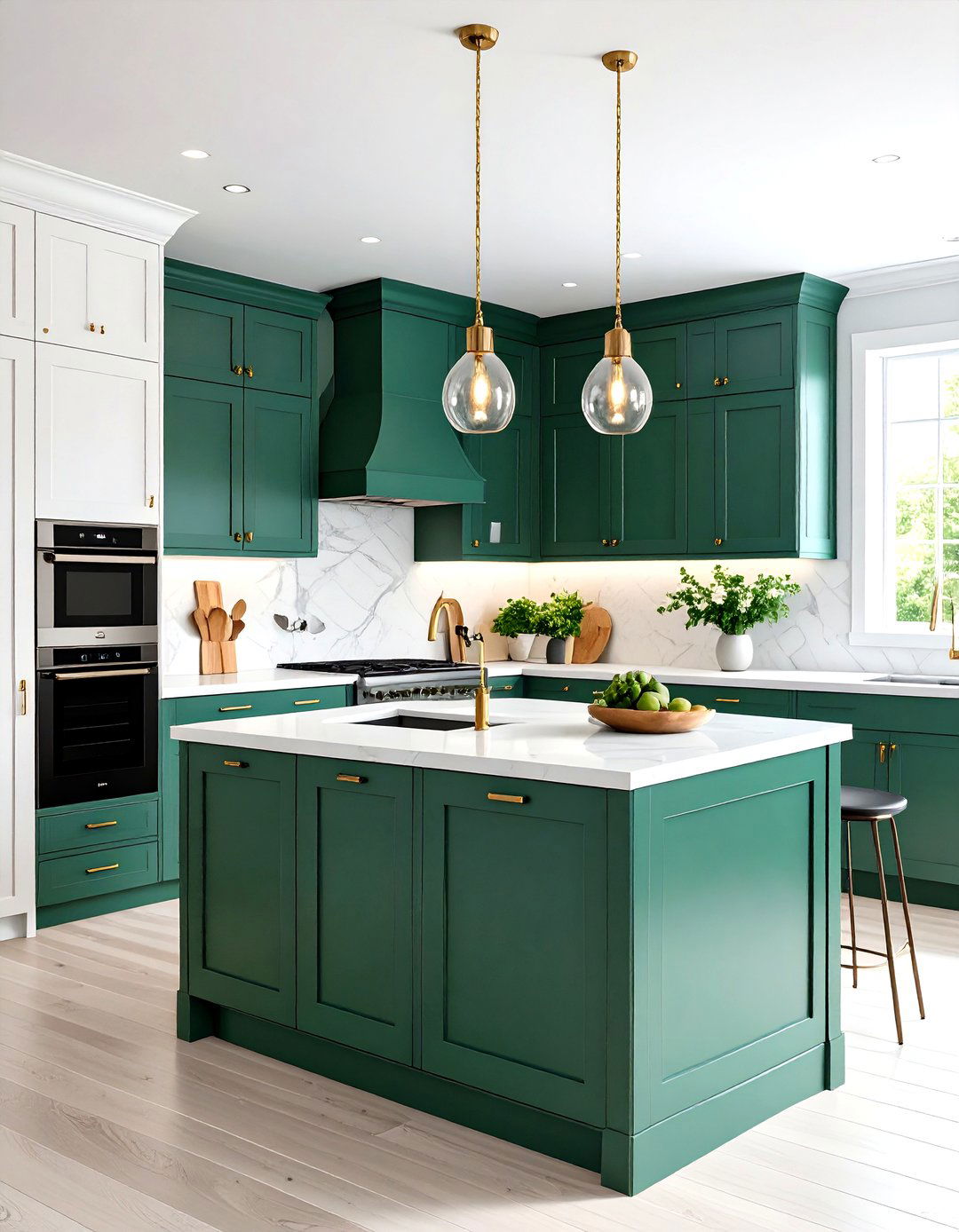
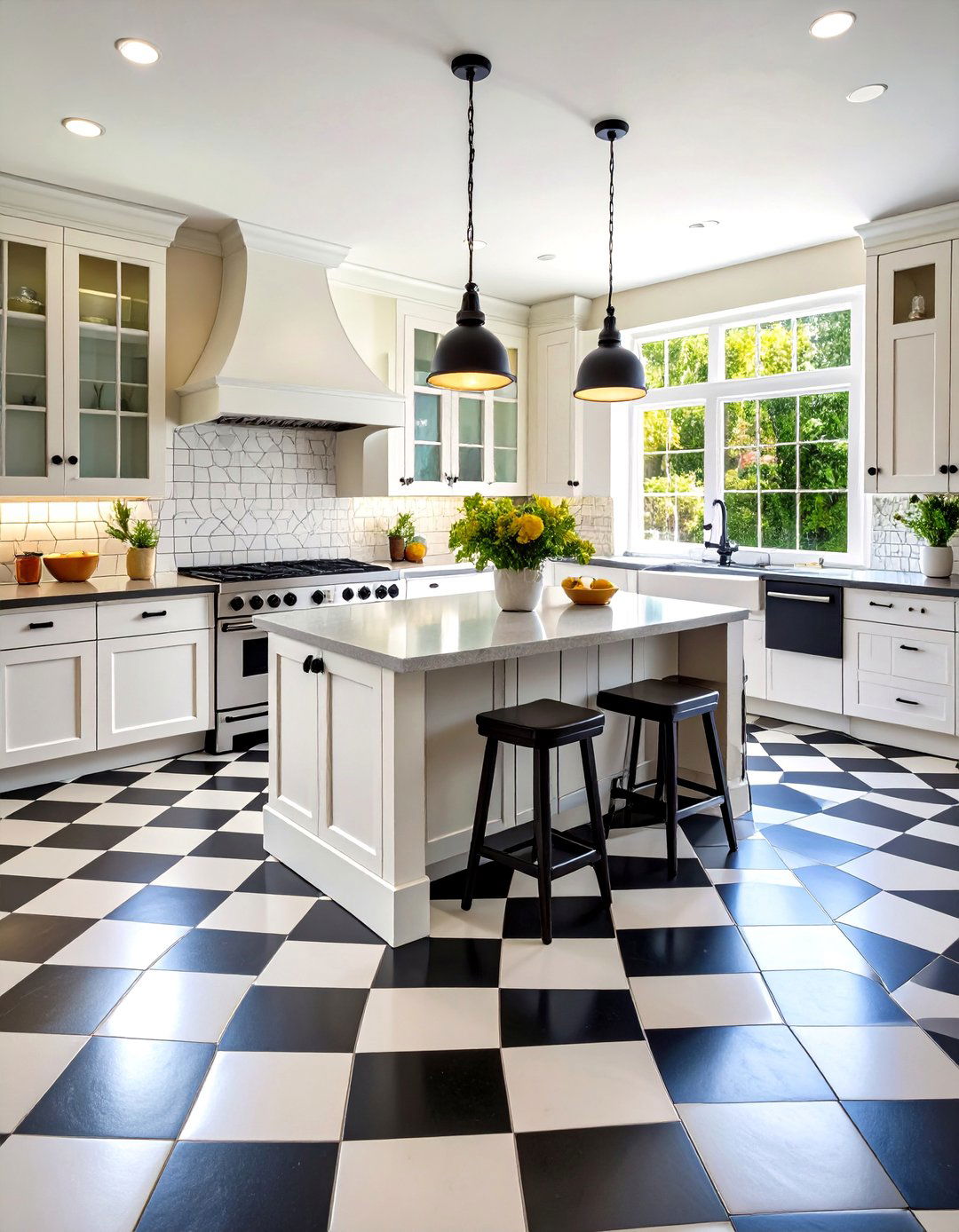

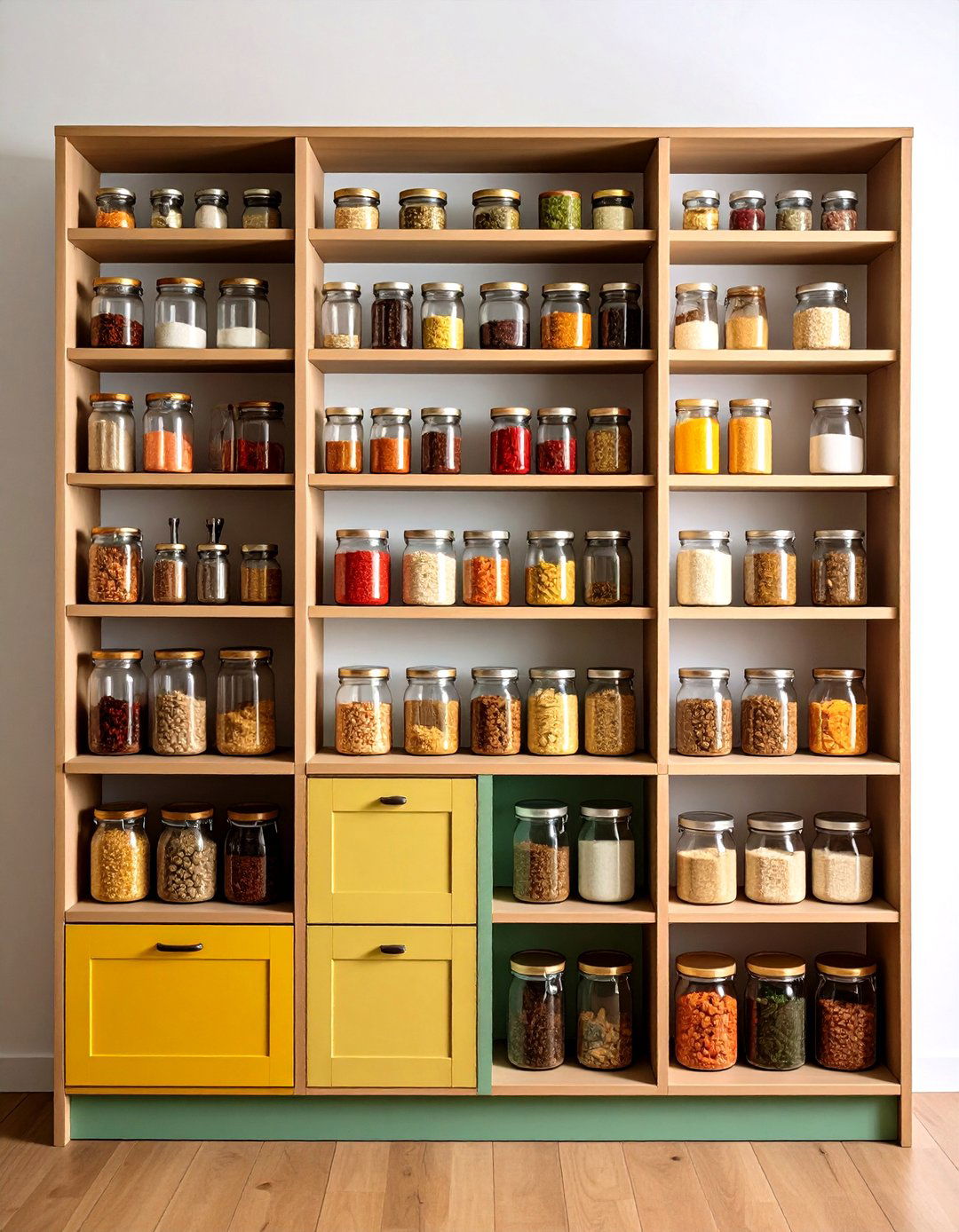
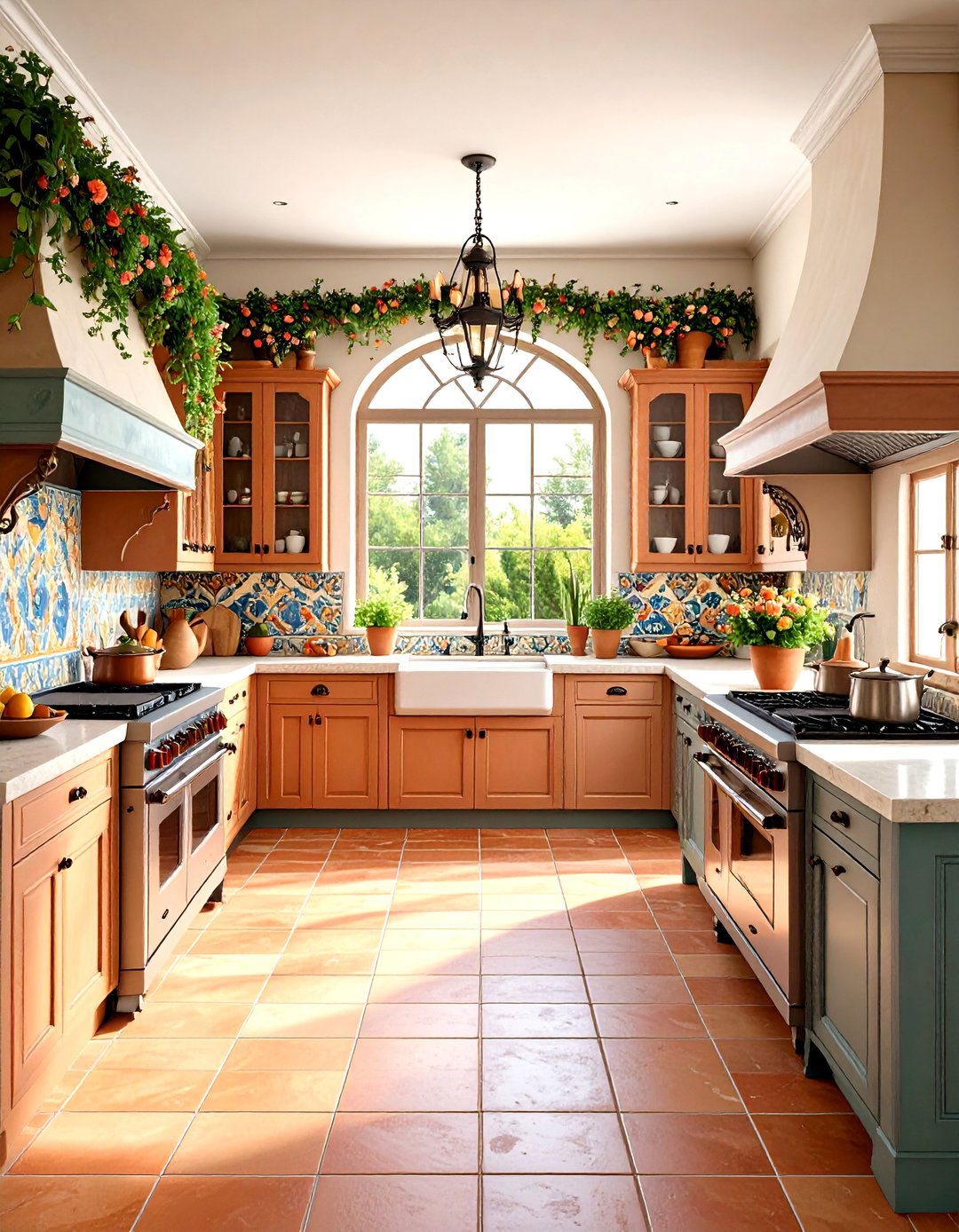
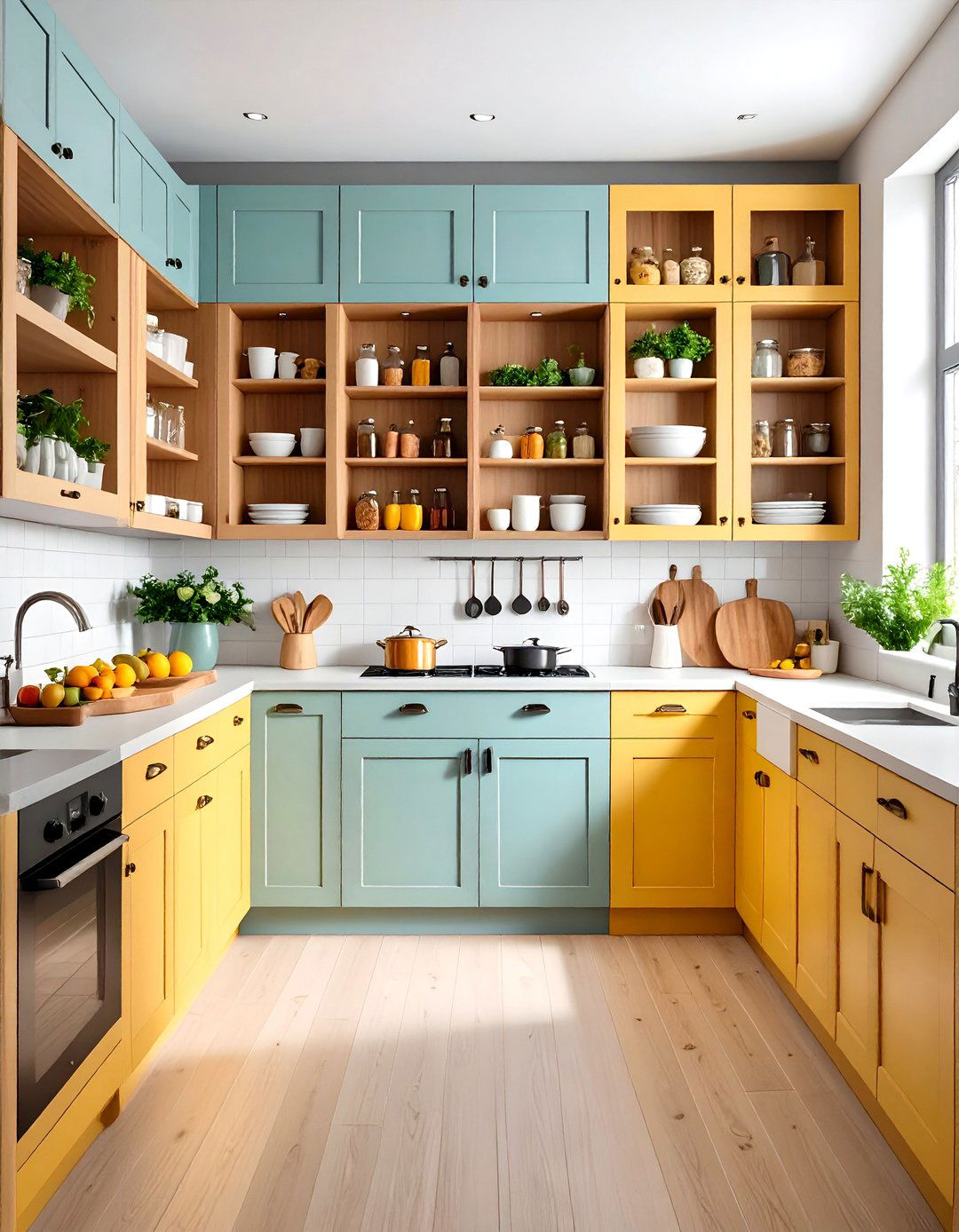

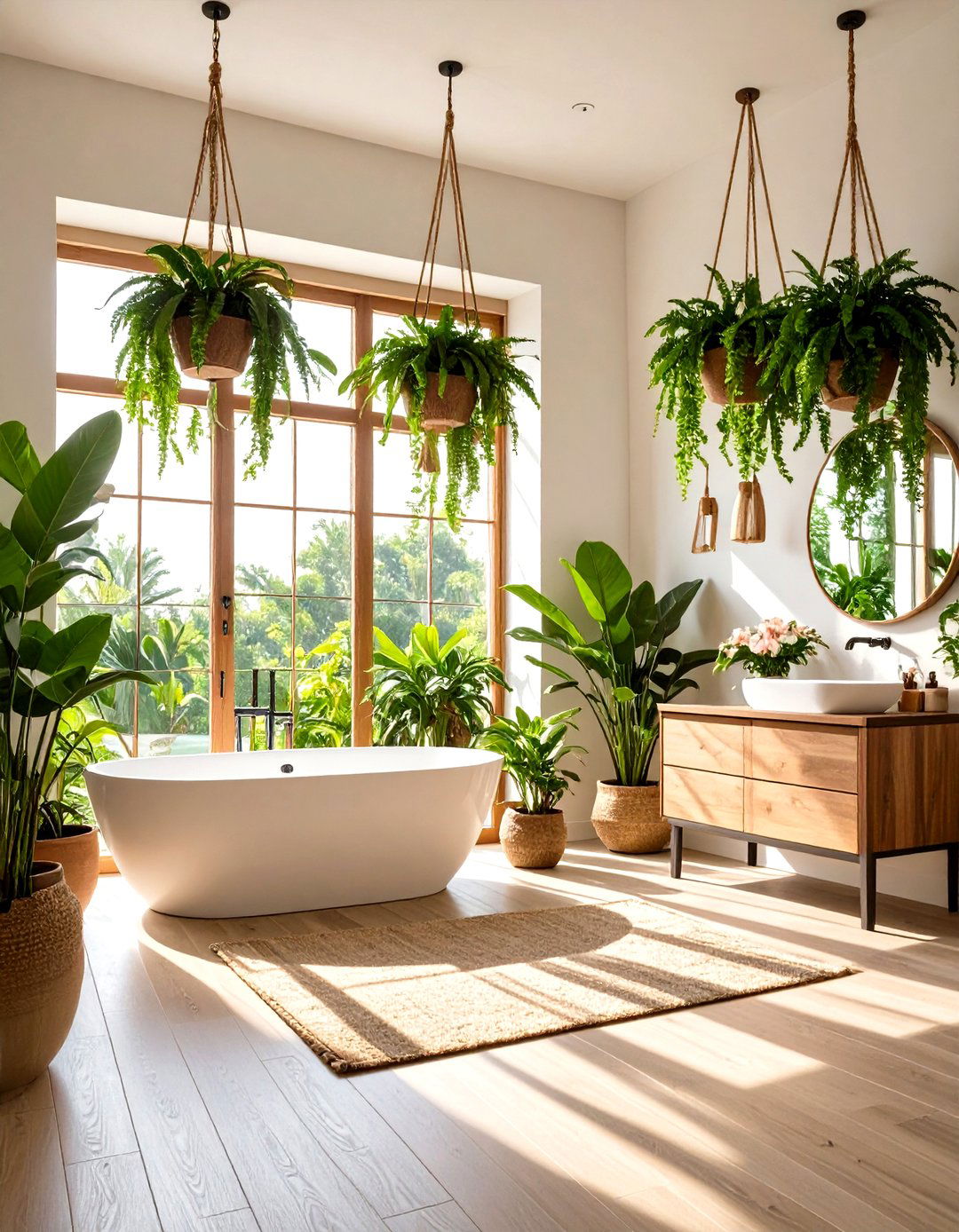
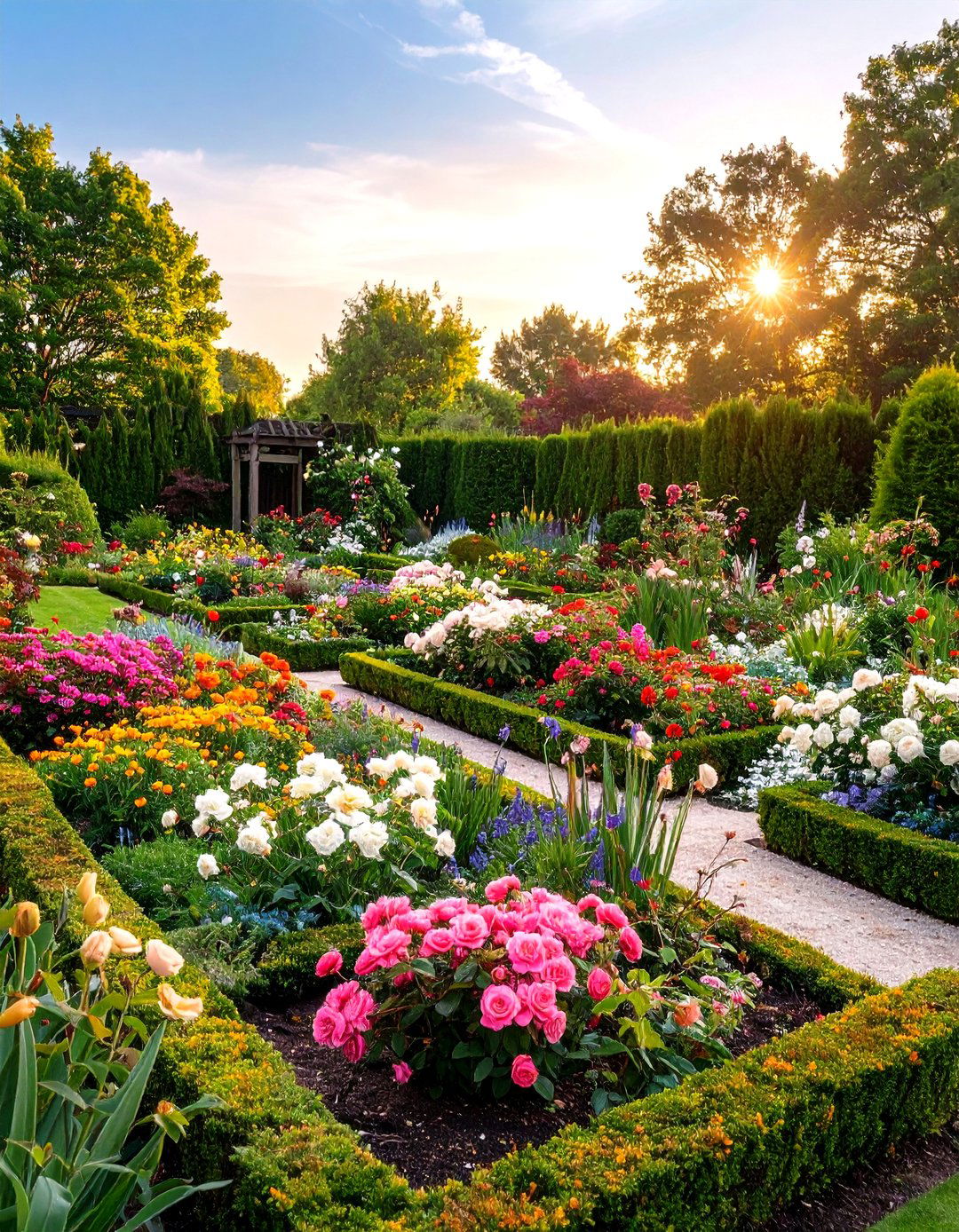
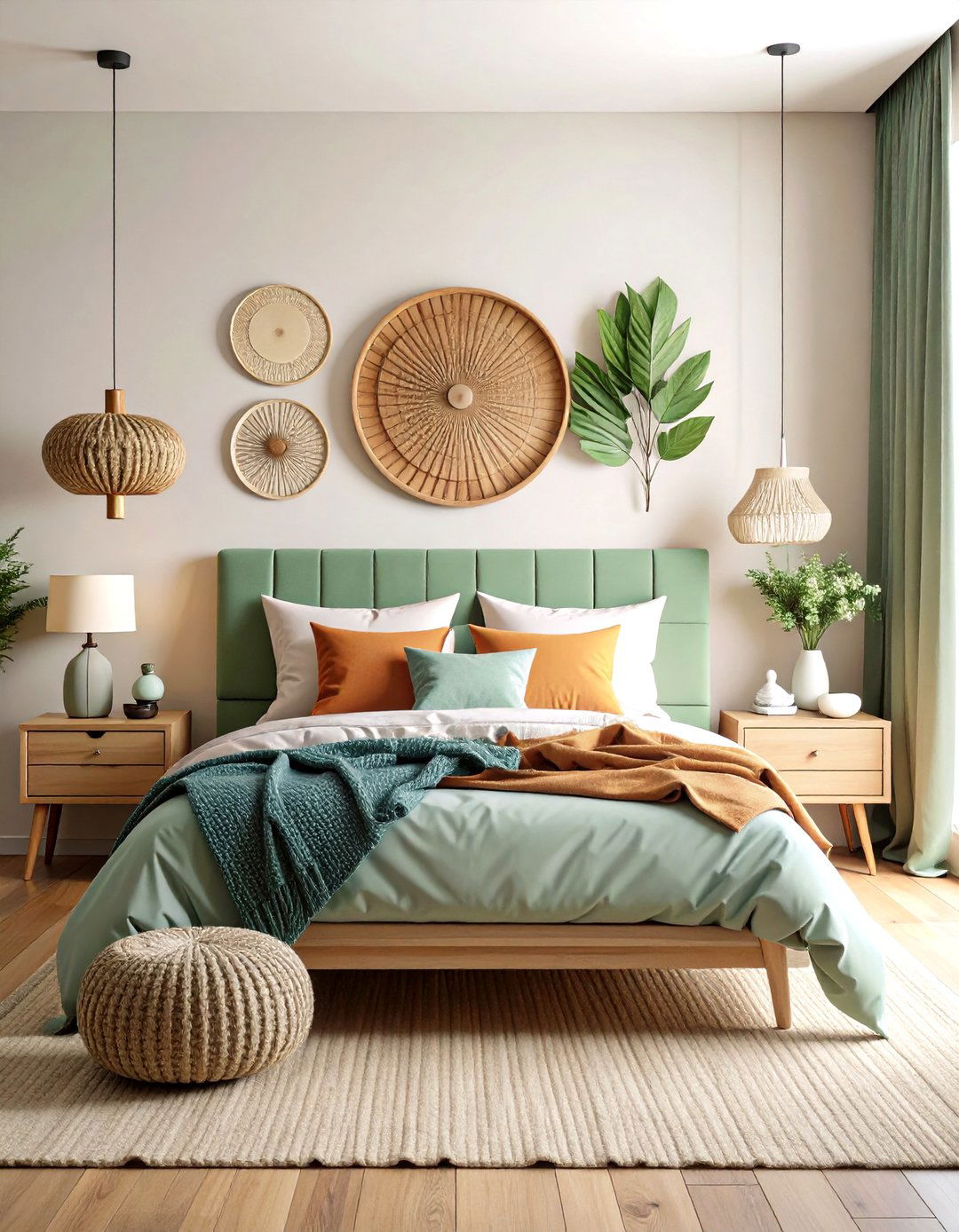
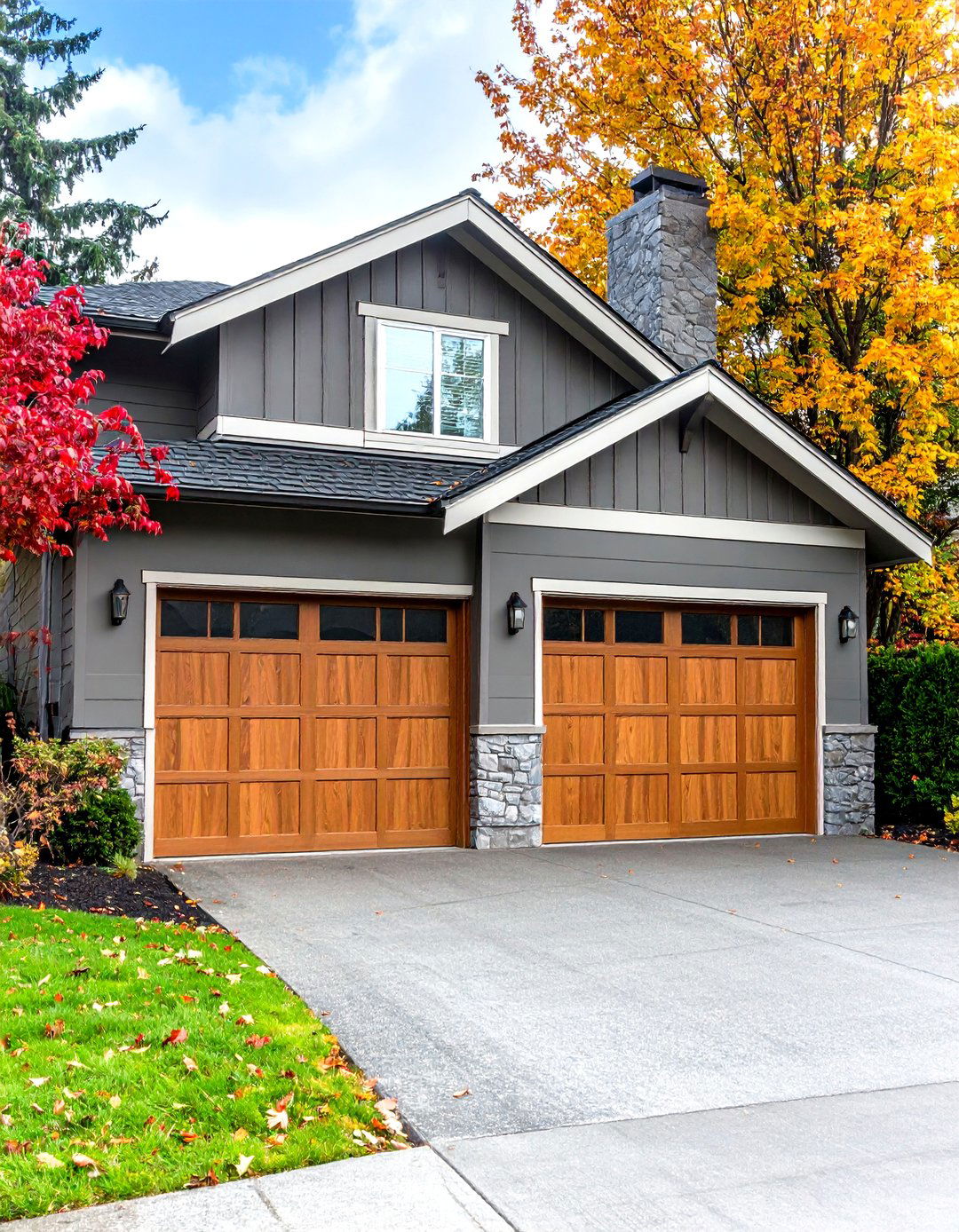

Leave a Reply